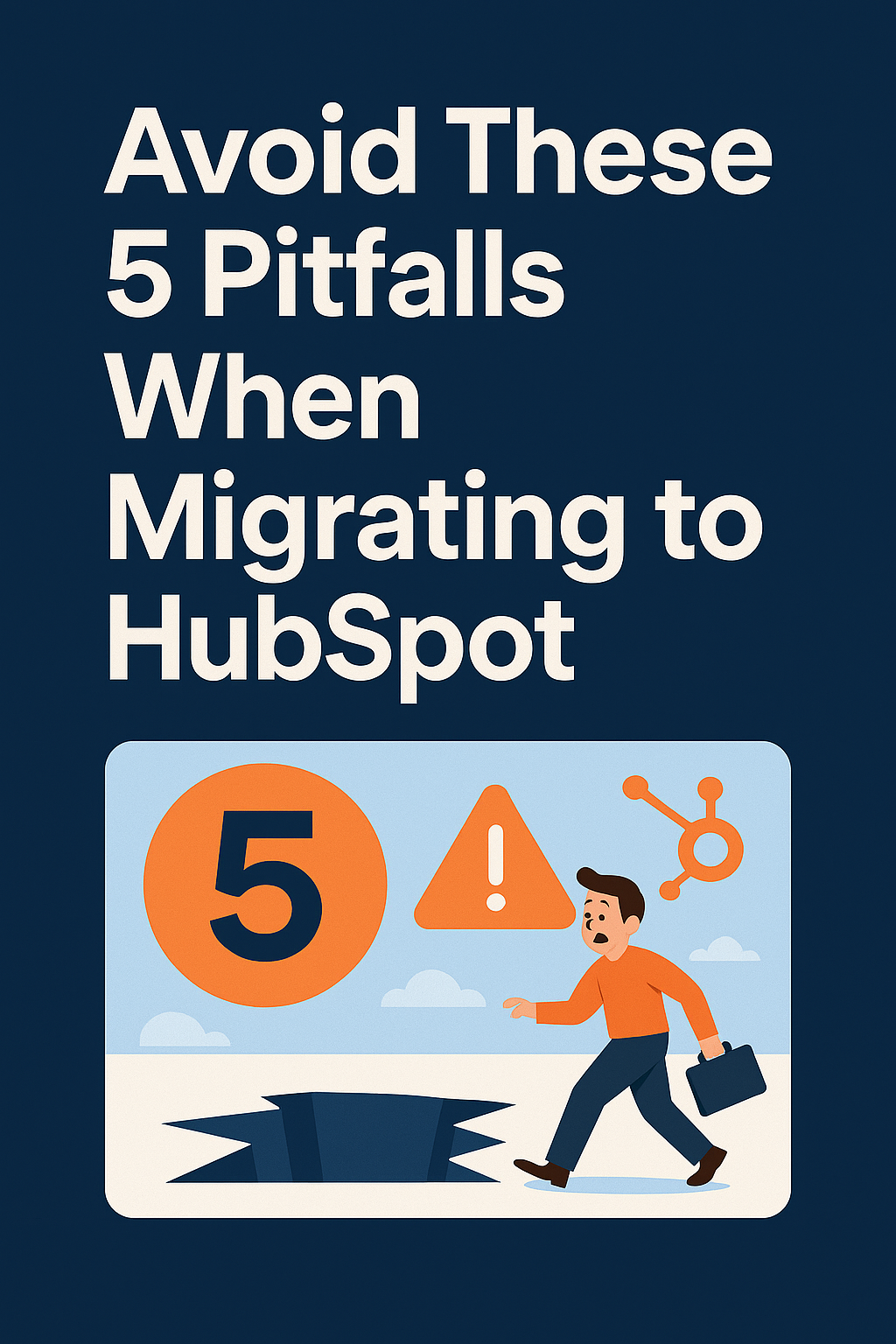If you're planning to migrate your CRM to HubSpot in 2025, you're on the right track.
More and more B2B companies are switching to HubSpot to centralise their marketing, sales, and service functions—and to streamline their revenue operations under one roof. But here’s the kicker: a lot of those migrations go sideways.
Not because HubSpot isn't powerful (it is), but because teams treat the migration like a lift-and-shift project, instead of a chance to rethink and optimise their entire GTM system.
We've helped start-ups, mid-market teams, and enterprise divisions move to HubSpot—and we've seen the same handful of mistakes derail good intentions. This post breaks down the five most common pitfalls and how to avoid them if you're serious about getting full value out of your HubSpot investment.

1. Lifting and Shifting Dirty Data
What goes wrong: Teams get excited and import everything from their old CRM—contacts, deals, custom fields, the works—without cleaning anything.
Why it matters: HubSpot is only as smart as the data you feed it. Duplicates, junk records, and inconsistent properties will mess with your workflows, reporting, and rep adoption. Dirty data = dirty outcomes.
How to fix it:
-
Run a data clean-up audit before you migrate.
-
Use tools like Koalify or HubSpot’s native import wizard to clean and deduplicate records.
-
Standardise and merge fields where needed. Less is more.
-
Don't migrate everything. Archive what you don’t need.
If your reps don't trust the data on day one, they'll stop using the CRM. And once adoption drops, it's hard to claw it back.
2. No Standardised Lifecycle or Deal Stage Definitions
What goes wrong: You try to recreate your old processes in HubSpot, or worse, skip lifecycle stages entirely.
Why it matters: Lifecycle stages and deal stages are at the heart of HubSpot's reporting and automation engine. If they aren't clearly defined and agreed upon, your funnel metrics, handovers, and automation logic won’t work.
How to fix it:
-
Define your lifecycle stages from top to bottom (e.g. Lead → MQL → SQL → Opportunity → Customer).
-
Keep deal stages action-based. Every stage should represent something a sales rep does or is waiting on.
-
Build automation that keeps stages up to date based on triggers (like form submissions, meeting booked, deal moved).
Pro tip: Align marketing, sales, and success teams around these definitions. One misalignment and your funnel reports fall apart.
3. Skipping Workflow Audits and Redesign
What goes wrong: You port over your old CRM workflows without questioning if they’re still useful.
Why it matters: Legacy automation is often messy, bloated, or flat-out broken. If you migrate it as-is, you're just transferring old problems into your new system.
How to fix it:
-
Audit all existing automation before migration.
-
Redesign workflows using HubSpot’s native capabilities like branching logic and goal tracking.
-
Prioritise critical flows like lead nurturing, MQL-to-SQL handovers, and internal notifications.
Pro tip: Keep things simple and scalable. The fewer workflows you need to troubleshoot post-launch, the faster your team will adopt the system.
4. Underestimating Reporting Setup
What goes wrong: You migrate your data, but forget to build the dashboards and reports people actually need.
Why it matters: Reporting is where leadership sees value. If your exec team can't measure pipeline velocity, campaign ROI, or lead source attribution from day one, they’ll question the move.
How to fix it:
-
Build role-based dashboards: Sales, marketing, RevOps, and leadership should each have views that matter to them.
-
Use custom reports to track lifecycle progression, conversion rates, attribution, and funnel drop-off.
-
Set benchmarks early. It helps track the before-and-after impact of your migration.
Pro tip: Don’t treat reporting as a Phase 2 task—bake it into your migration.
5. Ignoring the Role of Marketing Ops
What goes wrong: The migration is owned by sales or IT, and marketing gets looped in too late.
Why it matters: HubSpot is a marketing powerhouse. If you forget to rebuild lead scoring, list segmentation, UTM tracking, and email workflows, your marketing performance will suffer.
How to fix it:
-
Involve marketing ops from day one.
-
Rebuild automation and smart lists for segmentation.
-
Set up UTM conventions and campaign structures for attribution.
-
Test every workflow end-to-end before launch.
Pro tip: A lot of "migration regrets" are just broken marketing processes. Fix those early.
Final Thoughts
Migrating to HubSpot in 2025 is a big opportunity—but only if you treat it like more than a data dump. Done right, it can be the foundation for a smarter, more aligned GTM motion across marketing, sales, and customer success.
Avoid these five pitfalls, and your team will:
-
Trust the data
-
Use the system
-
Automate faster
-
Report better
-
Align across the funnel
Want to know where your current setup stands—or how your migration plan compares?
.png?width=496&height=499&name=AE-Consultancy-Logo-2%20(1).png)